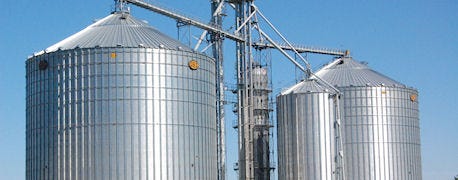
GSI's Gary Woodruff has a few tips for what's shaping up to be a challenging harvest.
Most don't expect to get into corn fields until September. With recent highs failing to top 85 degrees F, that's not sounding too bad.

Top Tips For Drying And Storing A Wet Corn Crop
As expected, Woodruff, GSI's product information manager, notes moisture will be the big stumbling block this year. Hopefully, 2009 necessitated a re-evaluation of drying equipment. "Many farmers were surprised by their yield in 2009," Woodruff notes. "It had a late start for planting and was short on growing degree days just like this year. Yet it was a record average and total corn crop for the U.S. In a wet harvest you don't see the invisible and head shatter losses and this year will likely be similar."
First, Woodruff recommends farmers get out and check the status of equipment. In some cases, old equipment could cost more in downtime than most are willing to accept.
"If you've got an old transport auger that's good for another year, in a regular year, replace it," Woodruff warns. "It could easily destroy itself trying to move heavy loads of wet grain."
Next, be willing to start earlier than normal. Woodruff says several farmers have told him they're starting on corn once moisture hits 35%. He recommends getting into fields at 30%. Of course, this may vary according to acreage.
There will be more fines than normal this year. Fines reduce the airflow on any type of drying equipment and that reduces capacity.
"Do all you can with combine adjustments to reduce fines and if you have one utilize a grain cleaner," Woodruff says.
Lastly, do a good job drying the crop down to 15% moisture. If corn comes out of the drier at an average of 15%, Woodruff notes the individual kernel moisture range could vary from 11% up to 30% with this year's higher harvest moistures.
Finish the job by running the bin's aeration fans for at least two weeks to equalize the moisture for safer storage. "Do your best to turn them on and forget about it," he adds.
In a normal year, he recommends a minimum of 10 days. But, with the lateness of this crop, he says the additional time will help even out this year's wider kernel variation.
And, once this crop is in the bin, repetitively core while filling, or at least core it after it is full. Then get it cold and keep it cold, Woodruff advises. For those who plan on marketing the 2013 crop by June 2014, he recommends taking it down to 40 degrees F or even below.
Keeping it past June 2014? Be sure to raise the bin's temperature slowly in the spring. Woodruff says the goal is to stay within 20 degrees F of the average ambient air temperature.
About the Author(s)
You May Also Like




